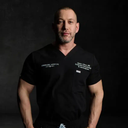Thank you for your question. You’re asking if there is a non-surgical laser or radiofrequency treatment that can restore volume around the lips without fillers because you expressed a concern about potential necrosis and embolism.






